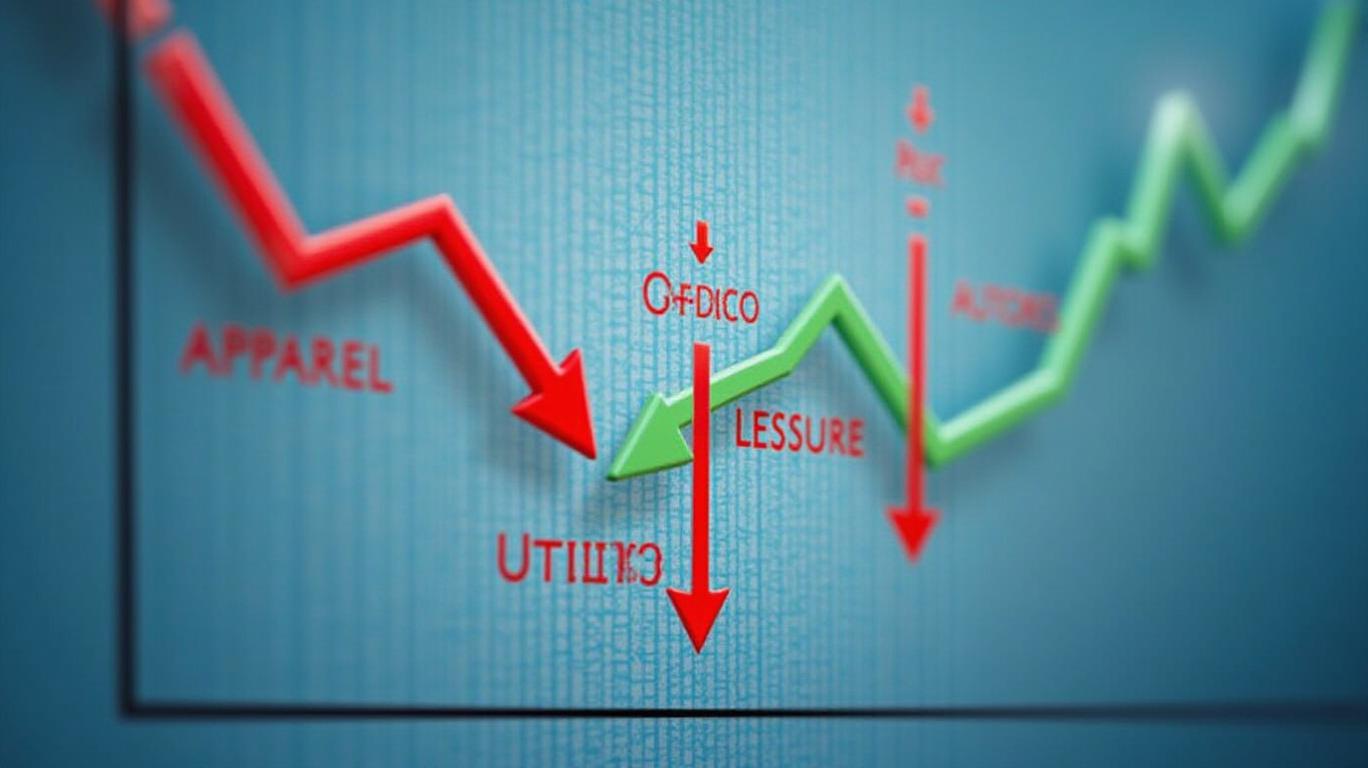Navigating the Tariff-Driven Slowdown: Defensive Plays in a Constrained Consumer Market
The global economy is navigating uncharted
as tariffs escalate into a full-blown "cost-push" storm. By May 2025, consumer discretionary sectors face a perfect storm of inflationary pressures, reduced purchasing power, and geopolitical uncertainty. With apparel prices surging 17% and auto costs climbing 8.4%, households now face an average annual loss of $3,800—a direct drain on discretionary spending. This article maps a tactical path through the turbulence, identifying defensive sectors primed to outperform and warning against overexposed pockets of risk.
The Cost-Push Squeeze: How Tariffs Are Rewriting the Rules
The tariff regime has become a stealth tax on households, with lower-income groups bearing the brunt. Fresh produce prices have jumped 4%, while essential apparel costs rise faster than in any single year since 2008. This inflationary wave is not just a headwind—it’s a structural shift. The S&P 500’s 10% correction since February 2025 reflects investor skepticism about the durability of growth in sectors reliant on consumer whimsy.
The key dynamic is clear: firms with pricing power and inelastic demand profiles will thrive, while those dependent on discretionary spending face margin erosion. The Federal Reserve’s reluctance to cut rates aggressively (despite QT reductions) amplifies the urgency for investors to pivot.
Defensive Plays: Anchor Your Portfolio in Resilience
1. Healthcare: The Steady Hand in Chaos
Healthcare stocks, particularly those with pricing power in pharmaceuticals and medical devices, are becoming the new "cash." With demand for healthcare services largely immune to economic cycles, this sector offers both defensive stability and inflation hedging.
2. Utilities: A Dividend Fortress
Utilities, backed by regulated pricing models and low correlation to consumer spending, are attracting capital fleeing volatility. Companies like NextEra Energy (NEE) and Dominion Energy (D) offer dividend yields above 3.5%, far outpacing the 10-year Treasury. Their stable cash flows make them a hedge against the "tariff uncertainty tax."
3. Tech with Pricing Power: The Global Agility Advantage
Not all tech is equal. Firms like Apple (AAPL) and Microsoft (MSFT), which dominate high-margin ecosystems (e.g., software, premium hardware), can pass cost increases to consumers while maintaining market share. Their global supply chains, optimized over decades, buffer against localized tariff shocks.
Warnings: The Vulnerable Sectors to Avoid
1. Retail: The Casualty of Margin Compression
Discount retailers like Walmart (WMT) may survive through scale, but smaller players in apparel and general merchandise face existential threats. With apparel prices up 17% and consumers cutting discretionary purchases, the sector’s profit margins are evaporating.
2. Leisure and Automotive: Braking at the Crossroads
Auto manufacturers exposed to export markets—such as Ford (F) and GM—face a double whammy: higher input costs and reduced overseas demand (-18% long-run export declines). Meanwhile, leisure stocks like Carnival Cruise Line (CCL) are pricing in a consumer pullback as disposable income shrinks.
Valuation Arbitrage: Spotting the Rebound Opportunities
Amid the gloom, two categories present compelling entry points:
1. Undervalued Cyclical Stocks: Sectors like industrials (e.g., Caterpillar CAT) and semiconductors (e.g., Texas Instruments TXN) are trading at 5-year lows relative to earnings. These could rebound sharply if tariffs are rolled back or inflation peaks.
2. Dividend Stalwarts with Reopening Potential: Consumer staples giants like Procter & Gamble (PG) and Coca-Cola (KO) offer low-risk income streams while positioning for post-tariff demand recovery.
Conclusion: Act Now—Before the Tide Turns
The tariff-driven slowdown is a clarion call for disciplined sector rotation. Investors must prioritize defensive income streams, pricing power, and supply chain resilience while avoiding overleveraged discretionary names. The window to position ahead of a potential 2H 2025 resolution—whether through policy shifts or market-driven tariff reductions—is narrowing.
The stakes are high. As households tighten their belts, capital will flow to the unshakable. The question is not whether to act, but whether you act fast enough.

Comments
No comments yet